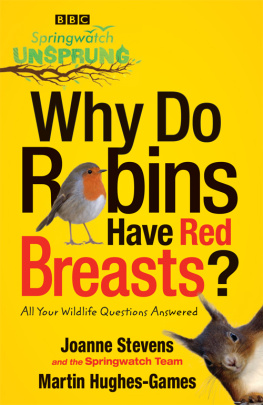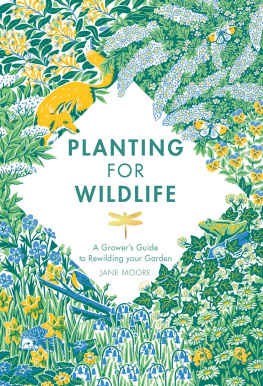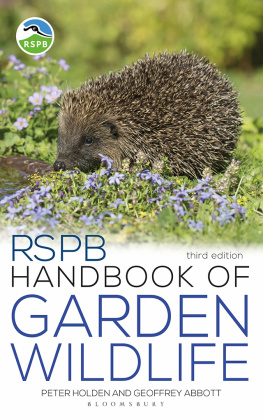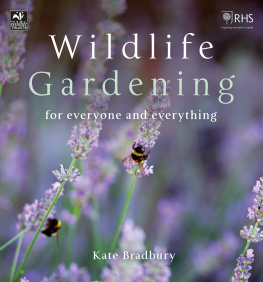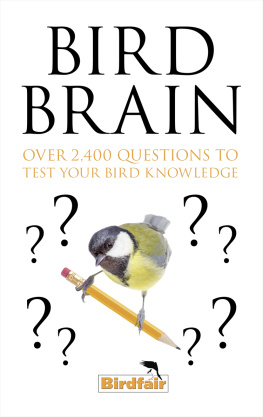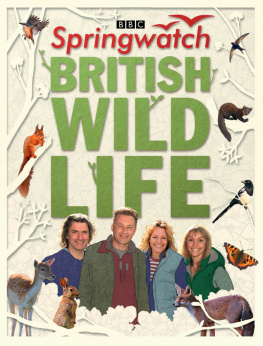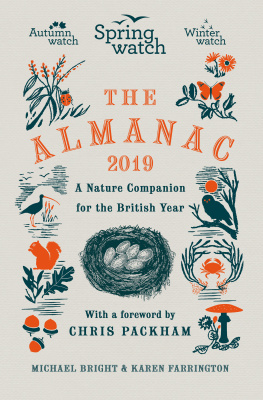For my parents, who always encouraged me to go outside and have little adventures.
Since Springwatch first hit our television screens back in 2005, the series has developed an enduring two-way relationship with its audience that is unique in UK broadcasting. Springwatch tapped into the publics passion for natural history and invited the audience to get involved, ask questions and share their experiences of observing their local wildlife. It started with good old-fashioned letters, videotapes and comments on the programmes website, but the conversation has today evolved to various social media networks like Facebook, Flickr and Twitter. Whatever the method of communication, one thing remains the same the audiences undimmed enthusiasm and endless thirst for knowledge.
By 2009, frankly, the show was inundated; thousands of beautiful photos, hundreds of hours of interesting footage and countless intriguing queries poured in from the audience. To accommodate all of this brilliant content a sister show called Springwatch Unsprung was spawned, with the inimitable Martin Hughes-Games at the helm. Subsequently, Autumnwatch and Winterwatch also gained their own version of Unsprung. Like its host, Unsprung can be anarchic, chaotic and irreverent, but at its heart lies a desire to rekindle a child-like wonder and curiosity about nature. It includes quizzes, live animal guests, artists and other guests who make a living from or have a hobby that involves nature. As a live, unscripted and unrehearsed show anything can happen and it often does. Ultimately, though, Unsprung is made by the audience; without their input the show simply wouldnt exist.
Still, even with Unsprung, there just wasnt enough airtime to answer all the compelling questions that were sent in proof, if it were needed, that UK wildlife can be just as fascinating as exotic foreign species. Hence this book, as an effort to scratch that metaphorical itch of a nagging wildlife query. You know what its like those niggling but profound questions in life that strike when youre walking to work, pottering in the garden or beachcombing with the kids (children always seem to ask the simplest but most challenging questions!). Why do ladybirds have spots? Do snails get slower with age? How do moths find their way in the dark? Do oysters dream? And why, oh why, do dogs love rolling in fox poo?!
Youll find the answers to all these and other equally perplexing questions in this book, arranged by season. Martin Hughes-Games has written an introduction to each section to inspire, inform and boost your natural history knowledge so that you can impress (?!) your friends in the pub. There are some mind-boggling quizzes thrown in for good measure too. And if reading about nature spurs you into action in the real world, theres a selection of wildlife organisations that would welcome your support and involvement. While Unsprung cant be re-created exactly on paper, hopefully its spirit shines through in these pages.

Spring surely our most uplifting and optimistic season? The thrill of seeing the first flowers, usually the lesser celandine with its gleaming golden petals, the naughty green shoots of Arum (lords and ladies) poking through the brown debris of winter (a plant which probably has more rude colloquial names than any other UK plant, due to the shape of its phallic stamen within the fold of the first leaf), and the shattering sight and smell of a bluebell wood, seemingly hovering an inch or two above reality. How can it be so dazzling? The colours are almost unreal, created from nothing more than air, sunlight and water, with a pinch of minerals from the soil. Magic.
Along with the bluebells there are often great swathes of powerful-smelling ramsons at this time of year. A girlfriend once cooked me a quiche flavoured with ramsons (wild garlic). It was, honesty compelled me to be frank, quite horrid and I foolishly said as much. That was some 30 years ago and shes still not forgiven me!
Suddenly eggs appear in nest boxes as my chickens start to lay again after a winter of rest. Soon Im making holes in compost with a pencil to plant tomato seeds. Then theres the almost forgotten sensation of the Suns warmth on bare skin Yes, spring is one of the glories of living in the UK because, of course, in some countries the different seasons are not so clearly defined they cannot enjoy this incredible sense of rebirth after a gloomy, desolate winter as new life explodes all across the countryside.
In early April I scan the sky with a mounting sense of expectation. Then, suddenly, there it is the first swallow of the year, sweeping through the sky, chesting up on the breeze, all the way from Africa, bringing with it the promise of warm days to come.
There are a host of things to see and do in spring. Watch out for migrating toads early in the year; thousands of them wake up from their winter torpor and start to march, en masse, towards their favourite breeding ponds. This can be a seriously impressive spectacle. Writing in 1188, Gerald of Wales slightly misinterpreted the toad migration:
In our own days, he says, a young man was persecuted by a plague of toads. It seemed as if the entire population of toads had made an agreement to visit him. Toads came flocking from all directions, more and more of them until no one could count them. In the end the young mans friends who were trying to help were quite worn out.
So far so good, but then Gerald comes off the rails as ever, scientific verisimilitude thrown out the window for the sake of a good yarn:
The toads killed him and ate him right up leaving nothing but his skeleton!
Migrating toads often have to cross roads and passing cars can, inadvertently, cause carnage. If you would like to help you can find local toad patrols at www.froglife.org/toadsonroads.
Im going to feature a special Unsprung word for each season, and the one for spring is guffing. Male newts display to the females underwater and at the end of their display they sometimes come up close and blow a bubble of air at her as if to say, I did all that and still have air to spare! This bubble blowing is called guffing.
Chris Packham and I went badger watching recently and its surprisingly exciting as Chris says, you keep thinking something is going to emerge from the sett entrance in the next 30 seconds. Badger watching is especially rewarding in spring as the youngsters make their first appearance above ground and, having been stuck underground in the sett for many weeks, they tend to be particularly feisty. There are many local badger watching groups to be found at www.badger.org.uk/content/Living.asp.
Of course, spring wouldnt be spring without mad March hares. I was once filming for Springwatch on Isla with Simon King and he suddenly said quick, quick! Those hares over there start filming them!. Frankly I was bemused, it was interesting to see hares, there were six of them all together, but ? Gradually Simon, as only Simon can, revealed the real drama of what was going on. There was one female, just coming into season, and the other five hares were potential suitors. It was fascinating to watch the males chasing the female in turn and seeing her beat them off (and the fur really flies) until, finally, she made her choice. Fighting mad March hares are generally females beating off unwelcome suitors, not males fighting each other.

